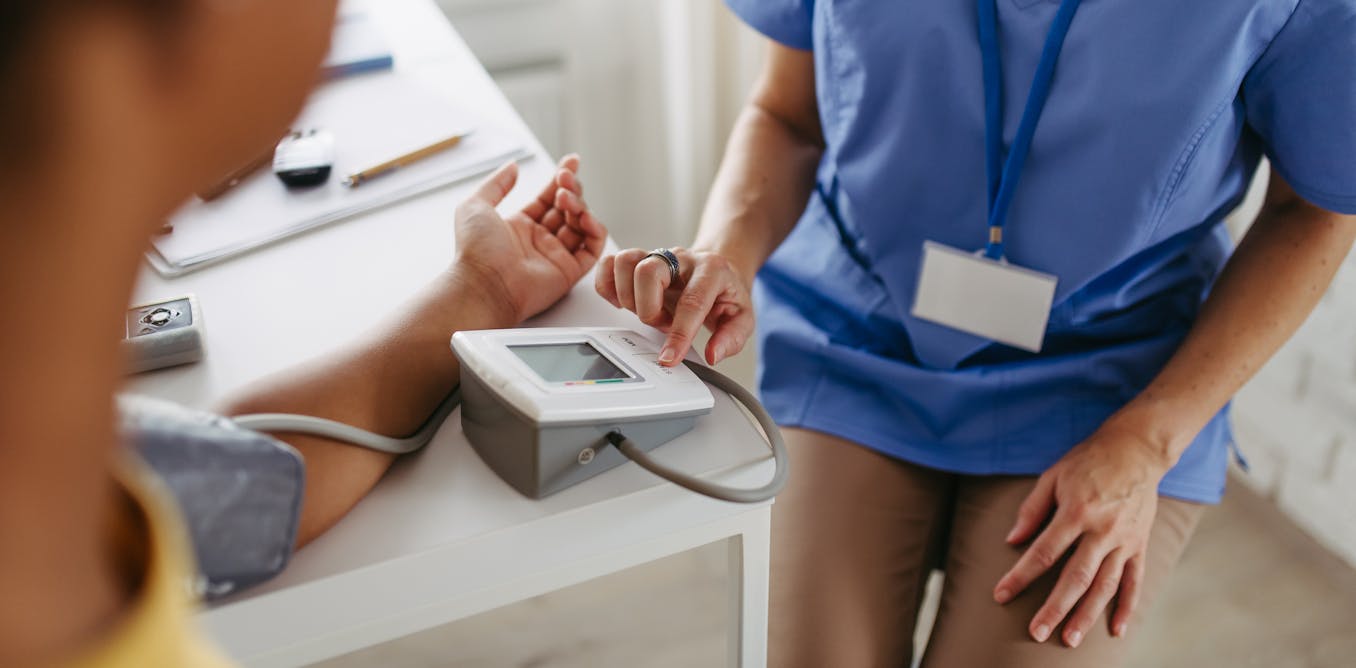ONE in four cancer cases and half of all deaths could be avoided, a new study suggests.
Researchers found they were attributable to things we can change in our lives, like smoking, alcohol consumption and not doing enough exercise.
2
Scientists at the American Cancer Society (ACS) studied data for 30 different types of cancer in adults over the age of 30 in the United States in 2019.
They looked at the number of cases and deaths, and whether they were linked to “modifiable risk factors” , including:
- Cigarette smoking (current and former)
- Secondhand smoke
- Excess body weight
- Alcohol consumption
- Consumption of red and processed meat
- Low consumption of fruits and vegetables, dietary fibre, and dietary calcium
- Physical inactivity
- Ultraviolet (UV) radiation
- Infection with Epstein-Barr virus (EBV), Helicobacter pylori, hepatitis B virus (HBV), hepatitis C virus (HCV), human herpes virus-8 (HHV-8; also called Kaposi sarcoma herpesvirus), human immunodeficiency virus (HIV), and human papillomavirus (HPV)
The team found 40 per cent of all cases (713,340) and about half of deaths (262,120) could be attributed to the factors above.
Analysis showed smoking to have the highest proportion of cases attributed to it – at 19.3 per cent, or 344,070.
Cigarettes contributed to 56 per cent (206,550 of 368,600) of all potentially preventable cancers in men, and 39.9 per cent (137,520 of 344,740) in women.
Being overweight was the second biggest risk factor (7.6 per cent), followed by drinking (5.4 per cent), UV radiation exposure (4.6 per cent), and physical inactivity (3.1 per cent).
When it came to the type of cancer, the proportion of cases caused by potentially modifiable risk factors ranged from 100 per cent for cervical cancer and Kaposi sarcoma (a soft tissue cancer), to 4.9 per cent for ovarian cancer.
It exceeded 50 per cent for 19 of the 30 evaluated cancer types.
As well as cervical cancer and Kaposi sarcoma, more than 80 per cent of all melanomas of the skin (92.2 per cent) and cancers of the anus (94.2 per cent), larynx (89.9 per cent), lung (88.2 per cent), pharynx (87.4 per cent), trachea (85.6 per cent), oesophagus (85.4 per cent), and oral cavity (83.7 per cent) were attributable to these risk factors.
Lung cancer had the largest number of cases attributable to evaluated risk factors in both men (104,410 cases) and women (97,250), and deaths (122,740).
This was followed by skin melanoma (50,570), bowel cancer (44,310), and urinary bladder cancer (32,000) in men, and by breast (83,840), corpus uteri (35,790), and bowel (34,130) cancer in women.
About 3.5 per cent of all cancer cases and deaths were attributable to infections.
HPV contributed to the largest proportion of cases (1.8 per cent) and deaths (1.2 per cent).
Lead author Dr Farhad Islami, senior scientific director, cancer disparity research at the ACS, said: “Despite considerable declines in smoking prevalence during the past few decades, the number of lung cancer deaths attributable to cigarette smoking in the United States is alarming.
“This finding underscores the importance of implementing comprehensive tobacco control policies in each state to promote smoking cessation, as well as heightened efforts to increase screening for early detection of lung cancer, when treatment could be more effective.
“Interventions to help maintain healthy body weight and diet can also substantially reduce the number of cancer cases and deaths in the country, especially given the increasing incidence of several cancer types associated with excess body weight, particularly in younger individuals.”
Dr Ahmedin Jemal, senior vice president, surveillance and health equity science at the ACS and senior author of the study, added: “These findings show there is a continued need to increase equitable access to preventive health care and awareness about preventive measures.”
The findings were published in CA: A Cancer Journal for Clinicians.
The most common cancers by age
WOMEN
AGE: 0-14
- Most common cancer: Leukaemia
- Symptoms: Fatigue (tiredness that lasts a long time and doesn’t improve with rest), bruising and bleeding more easily, or bleeding that takes longer to stop, infections that are more frequent, severe, or last longer, fever (high temperature), weight loss that is unexplained, swollen lymph nodes (glands in your neck, armpit and groin), breathlessness, feeling generally unwell
AGE: 15-24
- Most common cancer: Skin cancer
- Symptoms: Small bumps or growths on the skin, changing moles
AGE: 25-49, 50-74 and 75+
- Most common cancer: Breast
- Symptoms: A new lump or thickening in your breast or armpit, a change in size, shape or feel of your breast, skin changes in the breast such as puckering, dimpling, a rash or redness of the skin, fluid leaking from the nipple in a woman who isn’t pregnant or breastfeeding, changes in the position of the nipple
MEN
AGE: 0-14
- Most common cancer: Leukaemia
- Symptoms: Fatigue (tiredness that lasts a long time and doesn’t improve with rest), bruising and bleeding more easily, or bleeding that takes longer to stop, infections that are more frequent, severe, or last longer, fever (high temperature), weight loss that is unexplained, swollen lymph nodes (glands in your neck, armpit and groin), breathlessness, feeling generally unwell
AGE: 15-24
- Most common cancer: Germ cell tumours
- Symptoms: Depends on where the tumour develops – but usually, it starts with a lump that can be felt
AGE: 25-49
- Most common cancer: Testicular
- Symptoms: A swelling or lump, an increase in the firmness of a testicle, a difference in appearance between one testicle and the other, a dull ache or sharp pain in your testicles or scrotum, which may come and go, a feeling of heaviness in your scrotum
AGE: 50-74 & 75+
- Most common cancer: Prostate
- Symptoms: Needing to pee more frequently, often during the night, needing to rush to the toilet, difficulty in starting to pee (hesitancy), straining or taking a long time while peeing, weak flow, feeling that your bladder has not emptied fully, blood the in urine or semen
This study focused on the US, but there were 18.1million new cases of cancer worldwide in 2020, according to Cancer Research UK (CRUK) – so it’s an international problem.
The four most common types occurring globally are breast, lung, bowel and prostate, which account for more than four in 10 cases.
Around 10million people lost their lives to cancer worldwide in 2020.
Lung, bowel, liver and stomach were the most common causes, accounting for more than 40 per cent of all cancer deaths.
CRUK estimates there will be 28million new cases each year by 2040.

2
How to reduce your chance of cancer
Not all cancers can be prevented, but you can do things to reduce your risk. This includes:
Not smoking
Not smoking is the best thing you can do to reduce your risk of cancer. Harmful chemicals in cigarette smoke affect the entire body, not just our lungs.
Keep a healthy weight
Being a healthy weight has many health benefits, including reducing cancer risk.
Have a healthy, balanced diet
Eating a well-balanced diet consisting of healthy food and drink can reduce your risk of cancer.
Aim to have plenty of fruit and vegetables, wholegrain foods high in fibre and healthy proteins, and cut down on processed and red meat, alcohol and high-calorie foods and drinks.
Enjoy the sun safely
Being safe in the sun reduces the risk of skin cancer. Too much UV radiation from the sun or sunbeds damages our skin cells.
When the sun is strong, take extra care to protect your skin- spend time in the shade, cover up with clothing, and use sunscreen.
Cut back on alcohol
Reducing your alcohol intake lowers your risk of many types of cancer.
Source: Cancer Research UK




